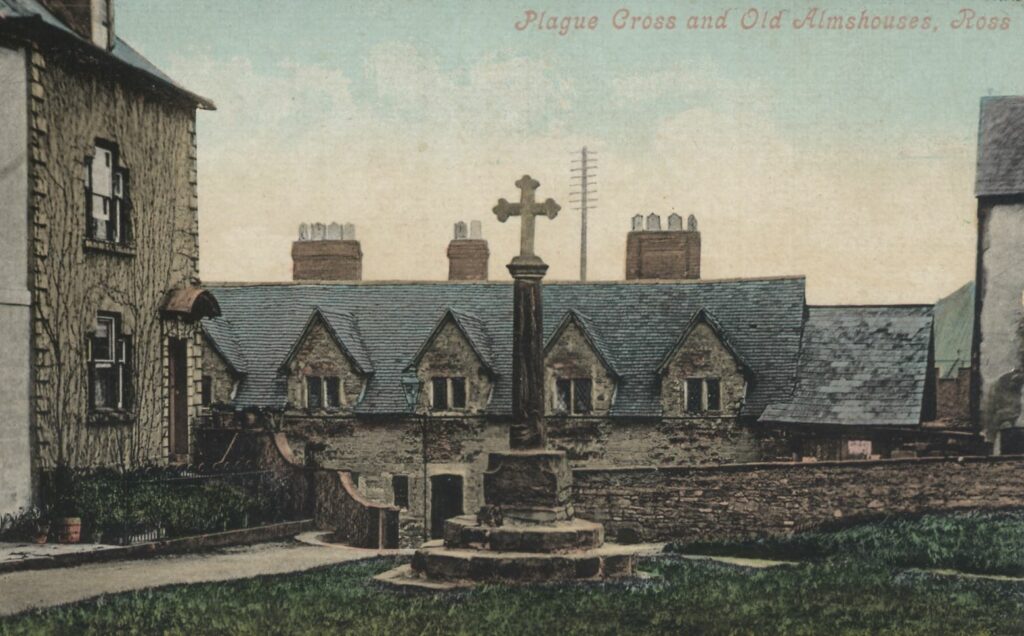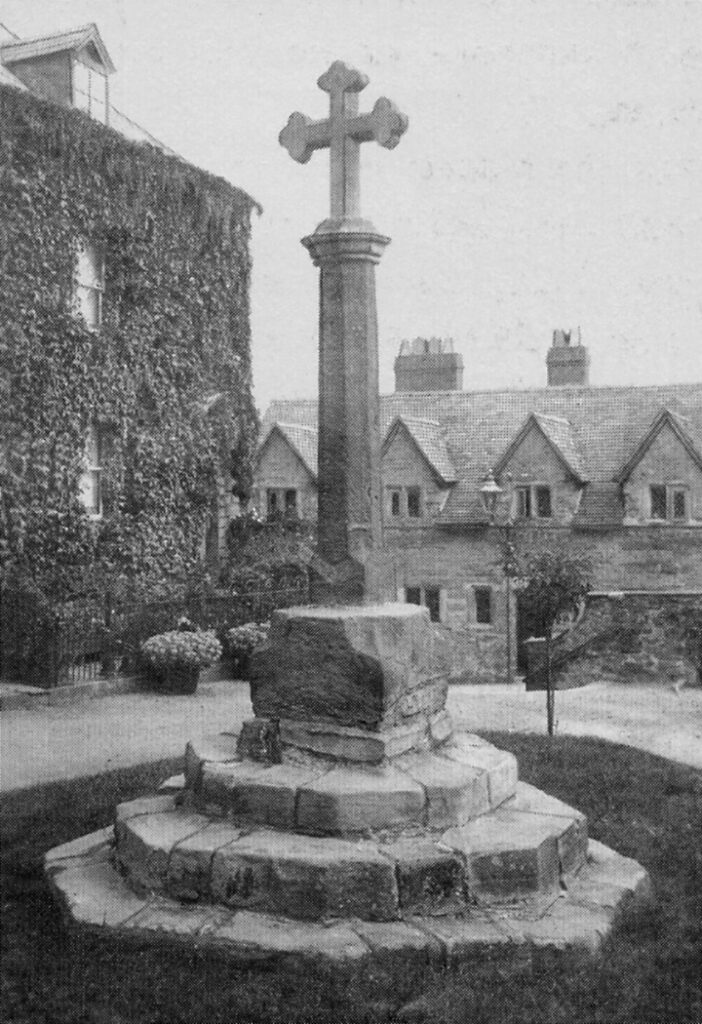Explore the gruesome scene in the churchyard in 1637 when 315 townsfolk are recorded as having died. They were brought to a big pit and buried by the Vicar, The Revd Philip Price, each night.

Plague 1637
A repurposed Medieval cross in the churchyard marks the burial place of 315 townsfolk who died from the plague in 1637, the year John Kyrle was born.
Thomas Jenkins died in 1830 but this account is formed from memories passed down to him by townsfolk.

The regular service at Ross Church was suspended; the market was also dropped; that the buying and sellings of marketings were conducted in the angles and arches of Wilton Bridge; the money was first thrown into a vessel of water before it was taken by one from another.
Thomas Jenkins
“The dead were buried at night in their wearing apparel in deep graves or pits, numbers at a time, near the cross in the churchyard, and from the cross westward. The bodies were brought in carts and slipped out of the carts into the grave. Good old Vicar Price used to stand on the cross solem-nising the funerals by torchlight.
“The parish records of the period show the number of burials as follows! To the end of the month of July, 1637, 34; in August, 107, September, 99; October 46; thence to the end of the year, 29. Allowing for deaths from ordinary causes more than 250 must have died from the terrible pestilence. During the prevalence of the plague, many of the inhabitants fled to Bridstow, Peterstow, Brampton and other places.
“Good Vicar Price”
Other accounts speak of Philip Price’s devotion to the people of the town while putting his own life at risk to minister to the dying. He is said to have led a procession through the streets of the town one morning at 5am chanting the Litany, after which the situation began to ease.
It is worth mentioning that in those days, Ross had both a Rector and a Vicar. The Rector held the living (and was financially well rewarded for that) but appointed a Vicar (less well remunerated) to minster to the parish (which at the time also included Weston and Brampton Abbotts). The Rector had long departed the town, no doubt. to some other parish from which he also derived a living and a property!
But these were turbulent times in the country for other reasons, the Civil War was afoot and “Good Vicar Price” was not so greatly thanked for his efforts on 25th September 1646 when he was removed from his living and sent packing from the Vicarage for refusing to give up the services of the Prayer Book during the Commonwealth. He had already been relieved of his duties at Weston in February of the same year. Philip Price was restored to the living when things had settled down in 1661 but died very soon after.

The artwork for this exhibit was created by Jaime Etherington
This exhibit has been made possible by a grant from the UK Shared Prosperity Fund through Herefordshire Council.

